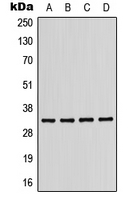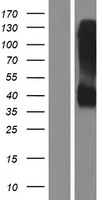order histories, retained contact details for faster checkout, review submissions, and special promotions.
Forgot password?
order histories, retained contact details for faster checkout, review submissions, and special promotions.
Location
Corporate Headquarters
Vector Laboratories, Inc.
6737 Mowry Ave
Newark, CA 94560
United States
Telephone Numbers
Customer Service: (800) 227-6666 / (650) 697-3600
Contact Us
Additional Contact Details
order histories, retained contact details for faster checkout, review submissions, and special promotions.
Forgot password?
order histories, retained contact details for faster checkout, review submissions, and special promotions.
KIR2DL2 / CD158b
killer cell immunoglobulin-like receptor, two domains, long cytoplasmic tail, 2
Killer cell immunoglobulin-like receptors (KIRs) are transmembrane glycoproteins expressed by natural killer cells and subsets of T cells. The KIR genes are polymorphic and highly homologous and they are found in a cluster on chromosome 19q13.4 within the 1 Mb leukocyte receptor complex (LRC). The gene content of the KIR gene cluster varies among haplotypes, although several "framework" genes are found in all haplotypes (KIR3DL3, KIR3DP1, KIR3DL4, KIR3DL2). The KIR proteins are classified by the number of extracellular immunoglobulin domains (2D or 3D) and by whether they have a long (L) or short (S) cytoplasmic domain. KIR proteins with the long cytoplasmic domain transduce inhibitory signals upon ligand binding via an immune tyrosine-based inhibitory motif (ITIM), while KIR proteins with the short cytoplasmic domain lack the ITIM motif and instead associate with the TYRO protein tyrosine kinase binding protein to transduce activating signals. The ligands for several KIR proteins are subsets of HLA class I molecules; thus, KIR proteins are thought to play an important role in regulation of the immune response.
| Gene Name: | killer cell immunoglobulin-like receptor, two domains, long cytoplasmic tail, 2 |
| Family/Subfamily: | Immunoglobulin , not assigned-Immunoglobulin |
| Synonyms: | KIR2DL2, CD158B1, Cl-43, CD158k, MHC class I NK cell receptor, NKAT6, NKAT-6, p58 NK receptor CL-43, p58.2, CD158b, CD158b1 antigen |
| Target Sequences: | NM_014219 NP_055034.2 P43627 |














If you do not find the reagent or information you require, please contact Customer.Support@LSBio.com to inquire about additional products in development.










